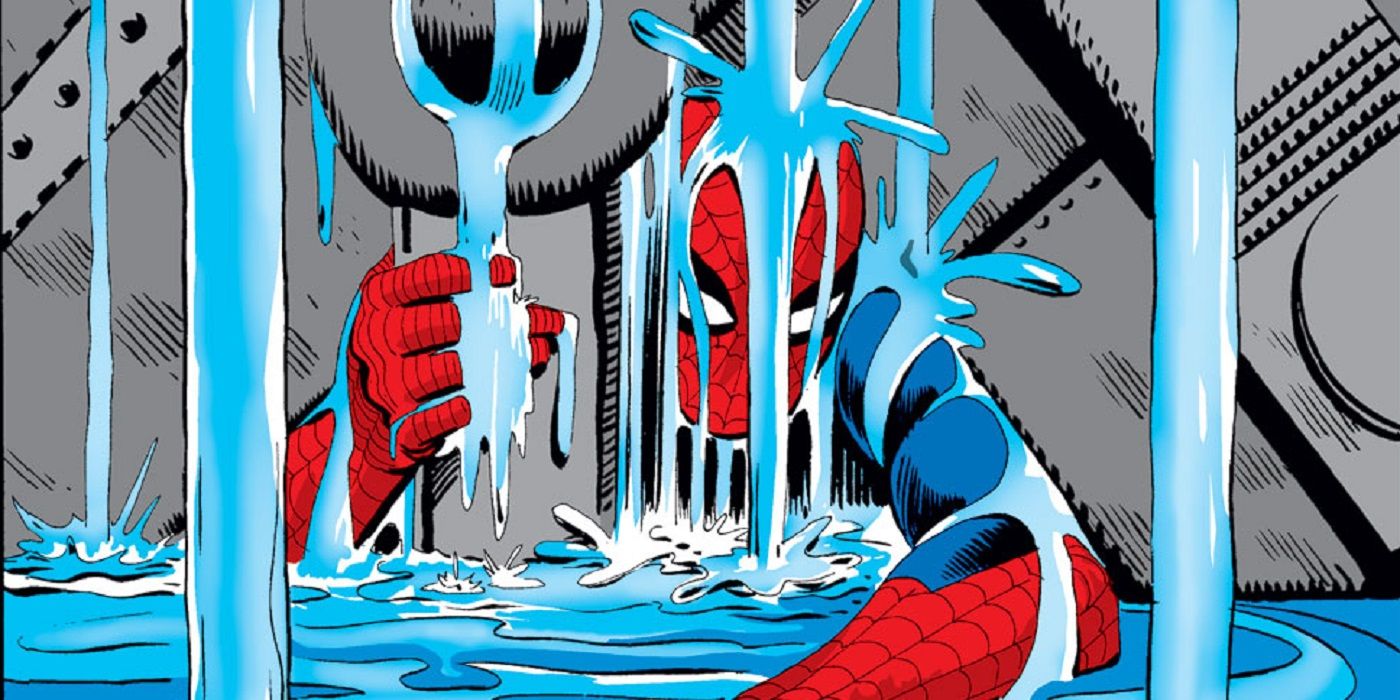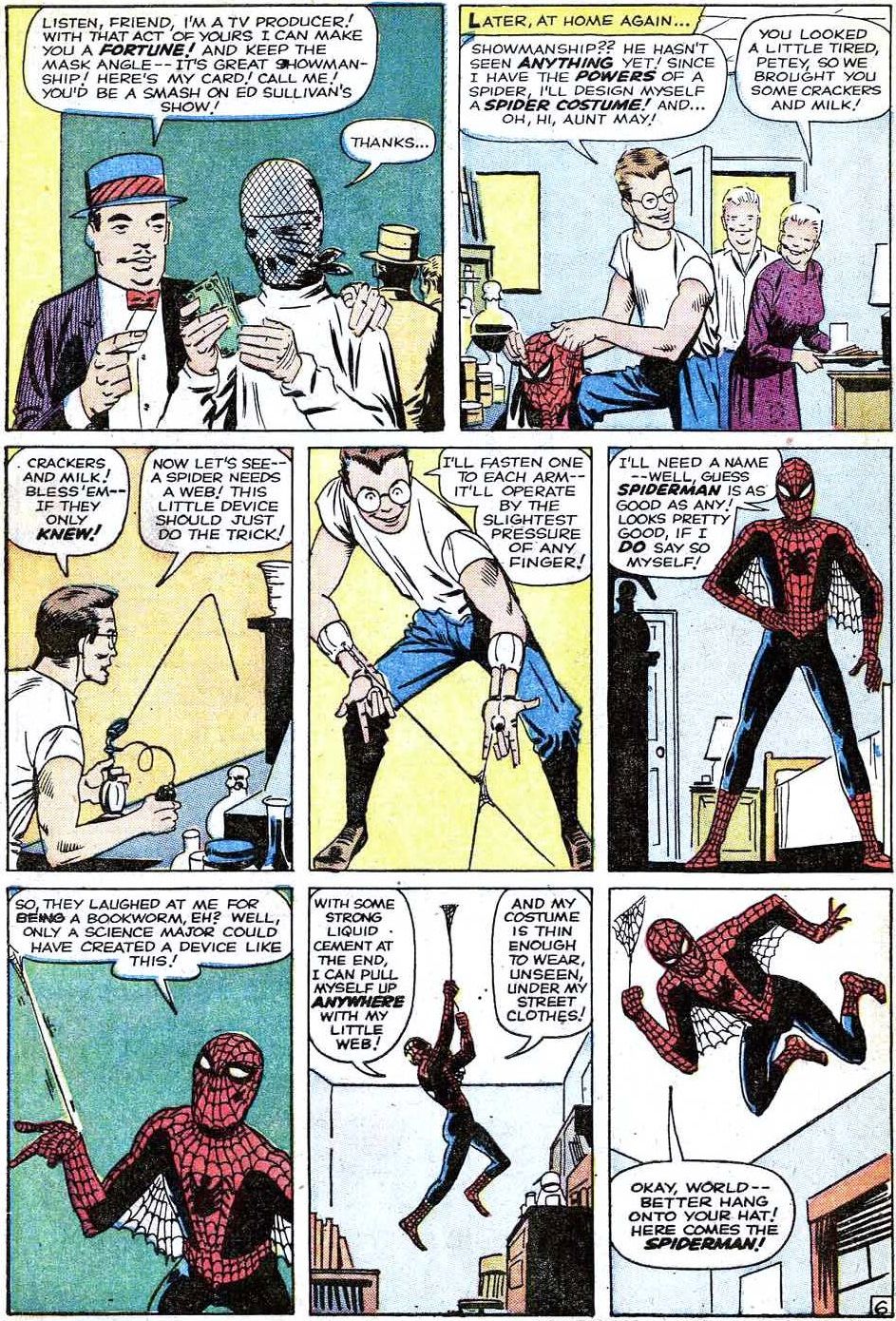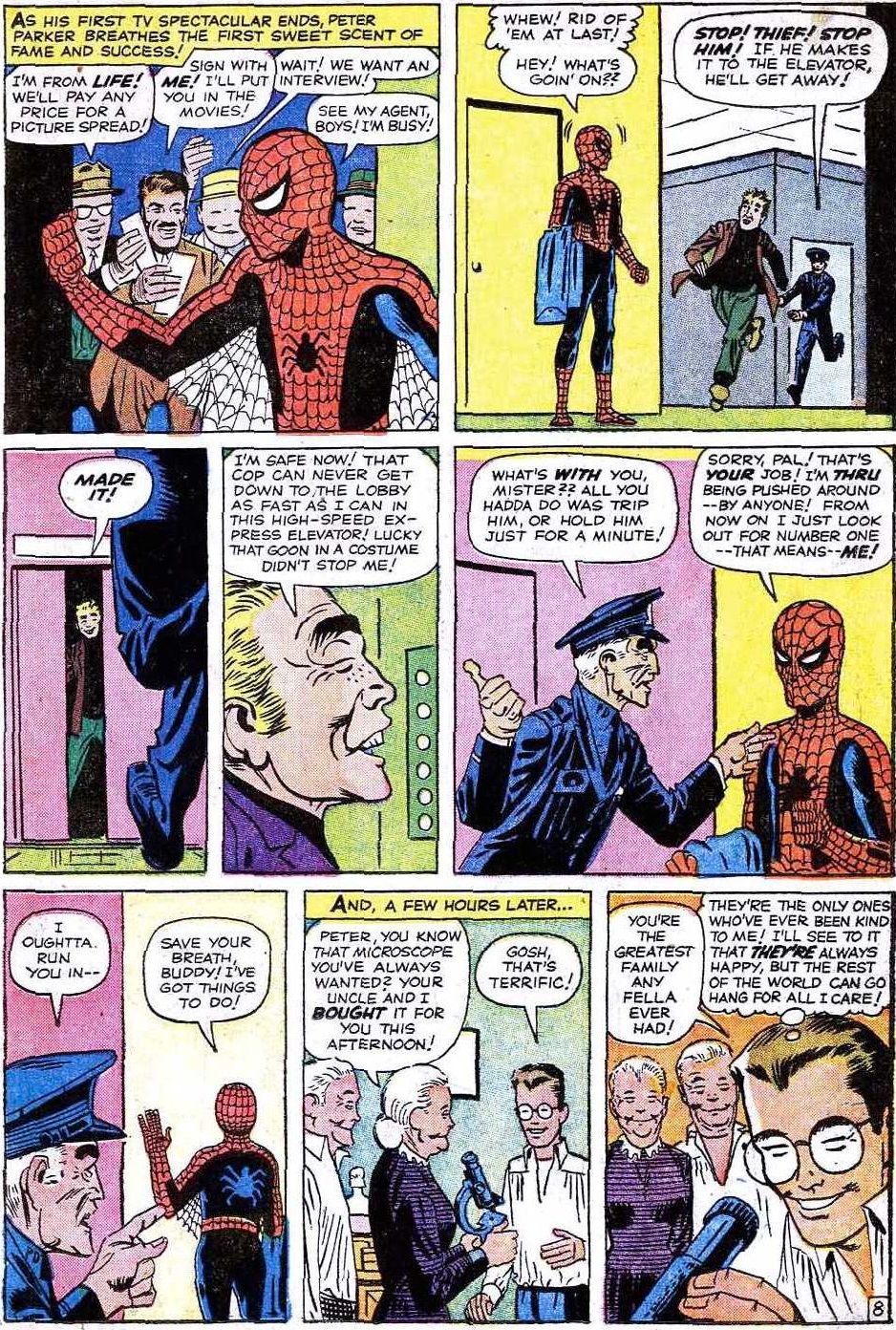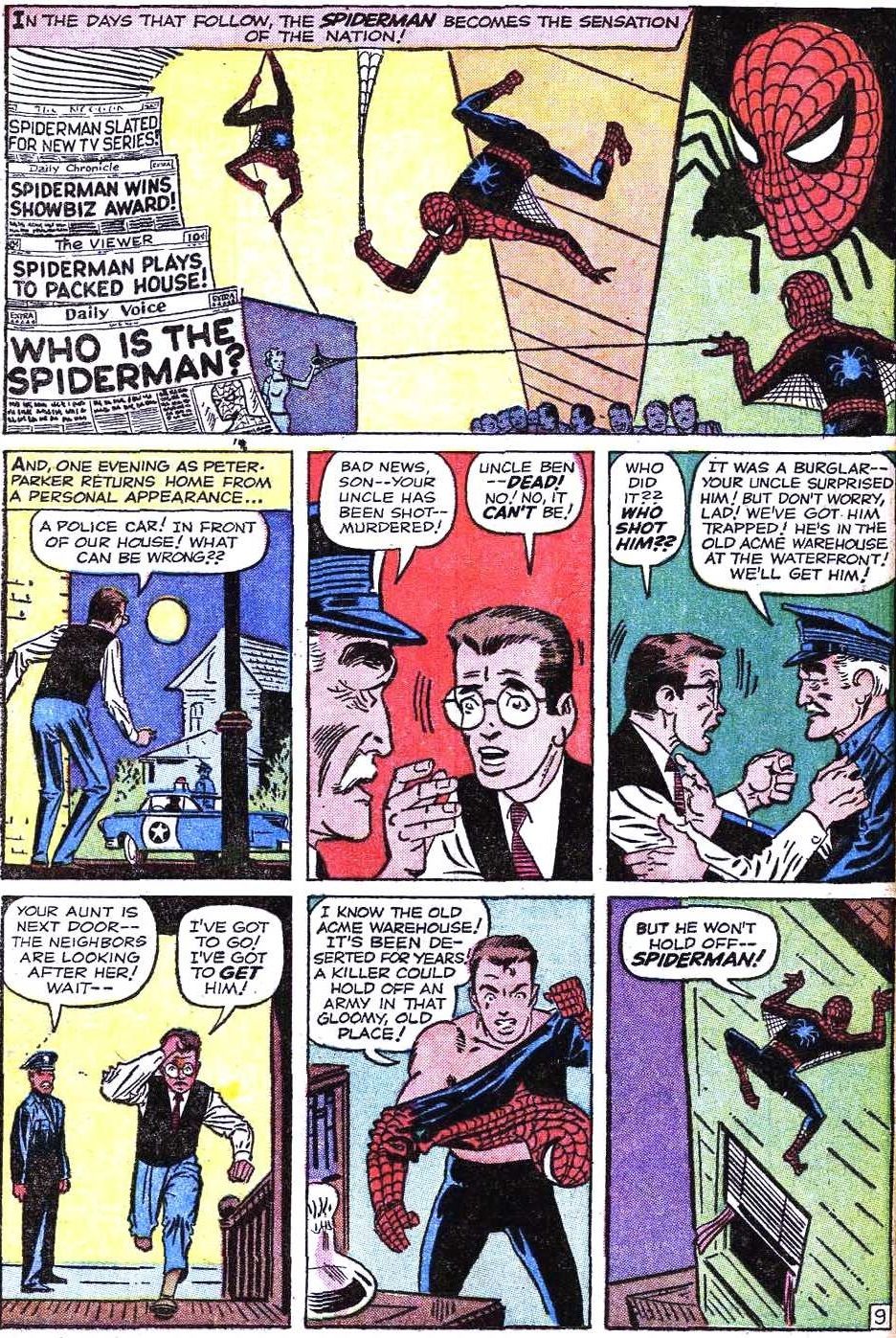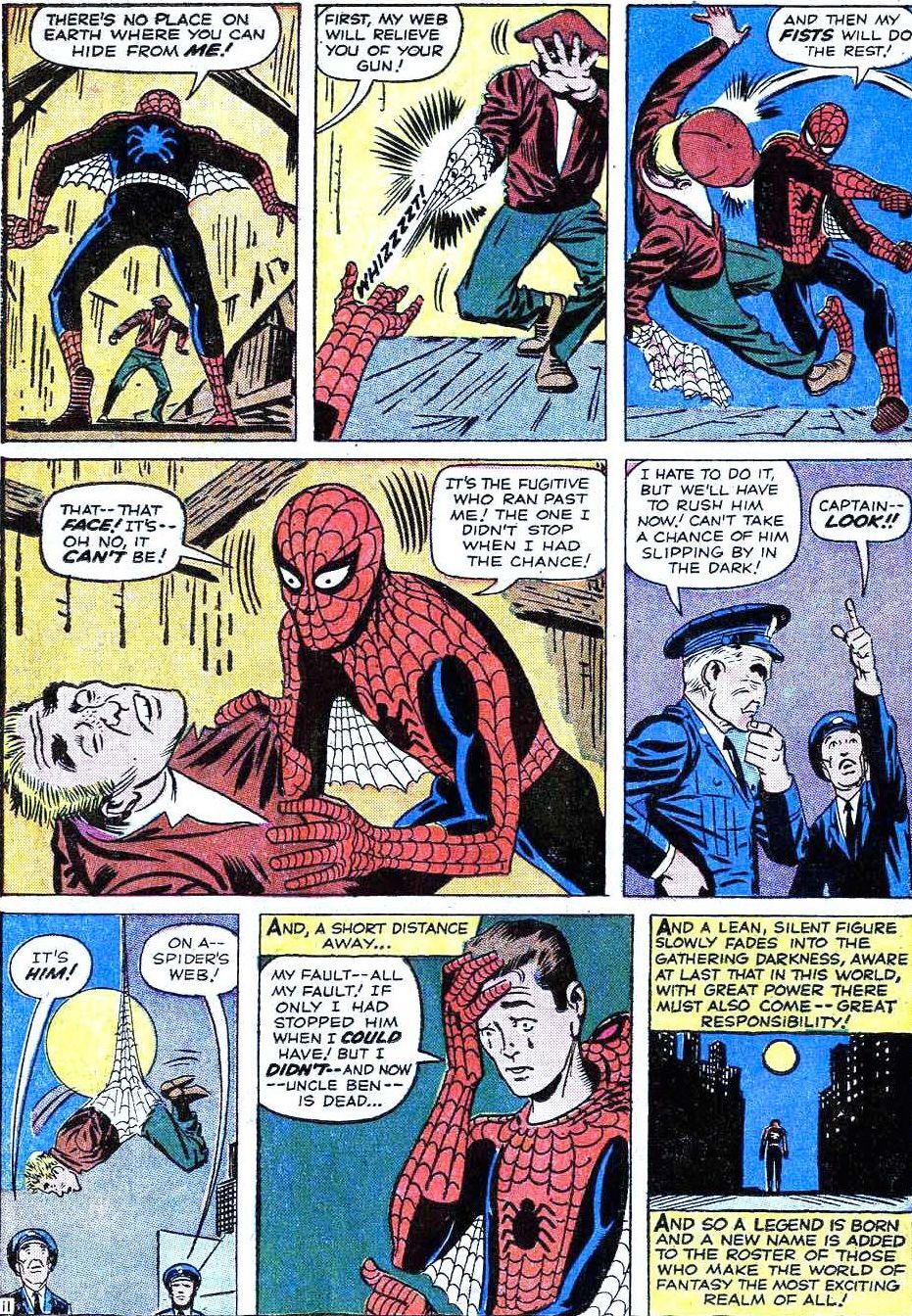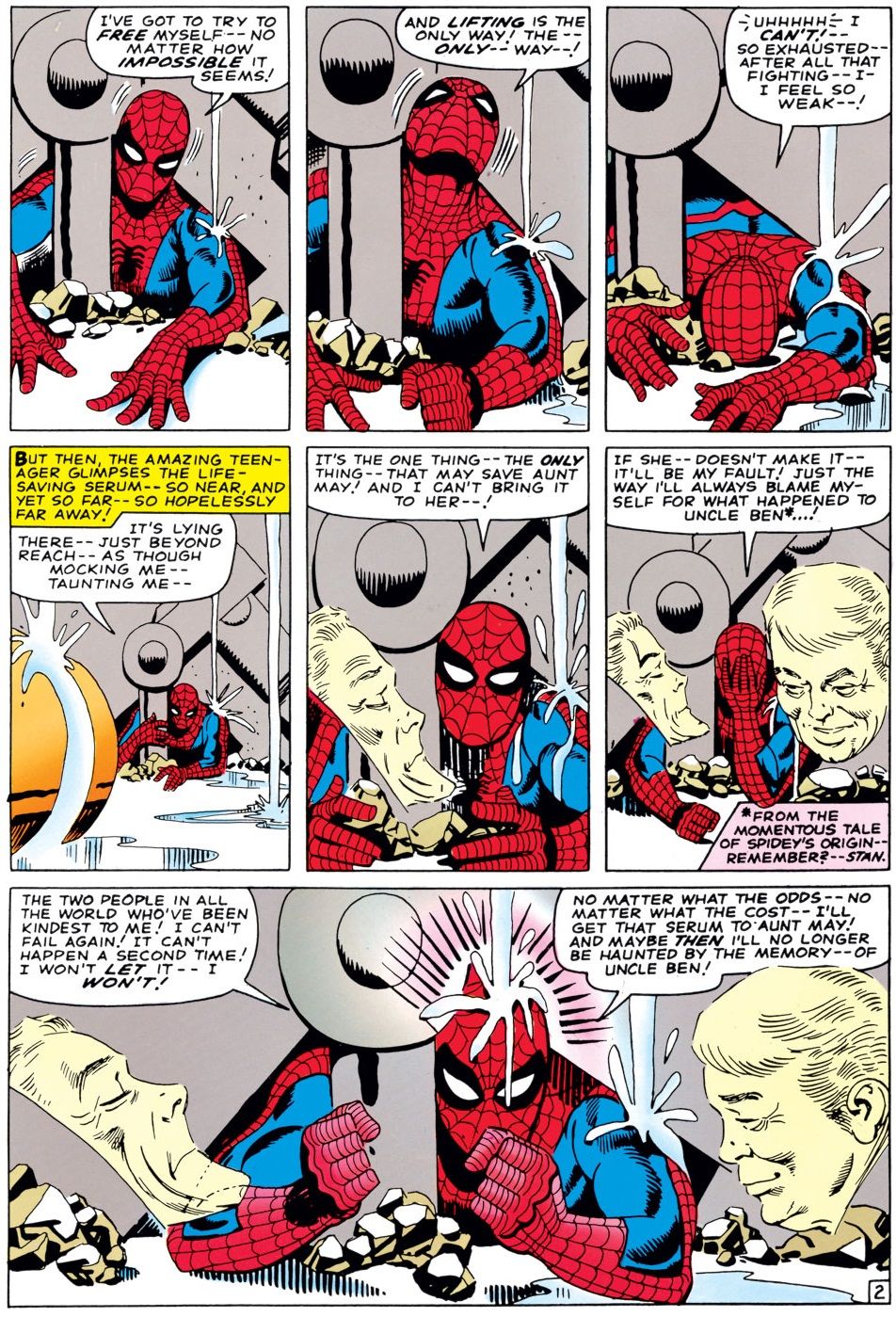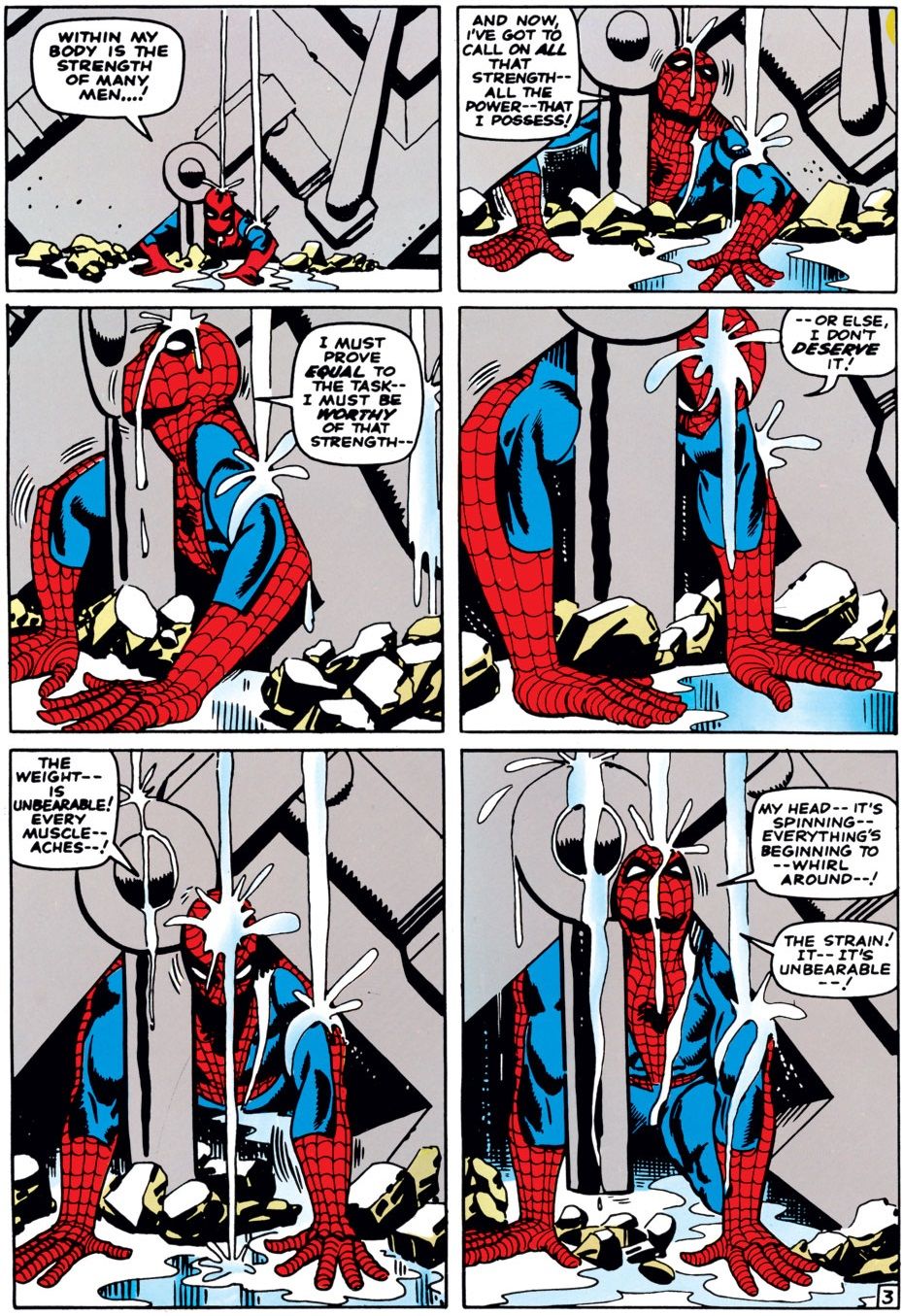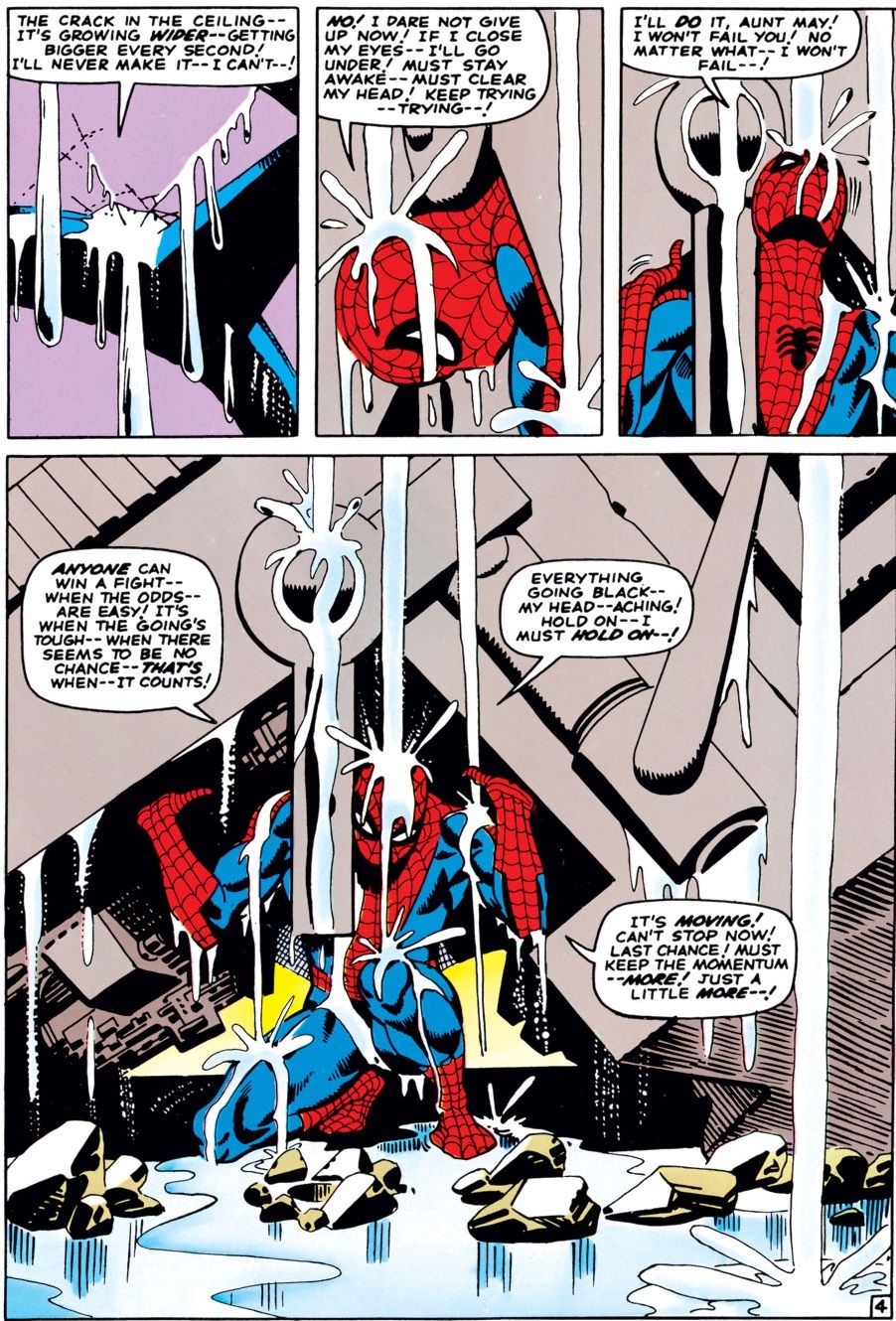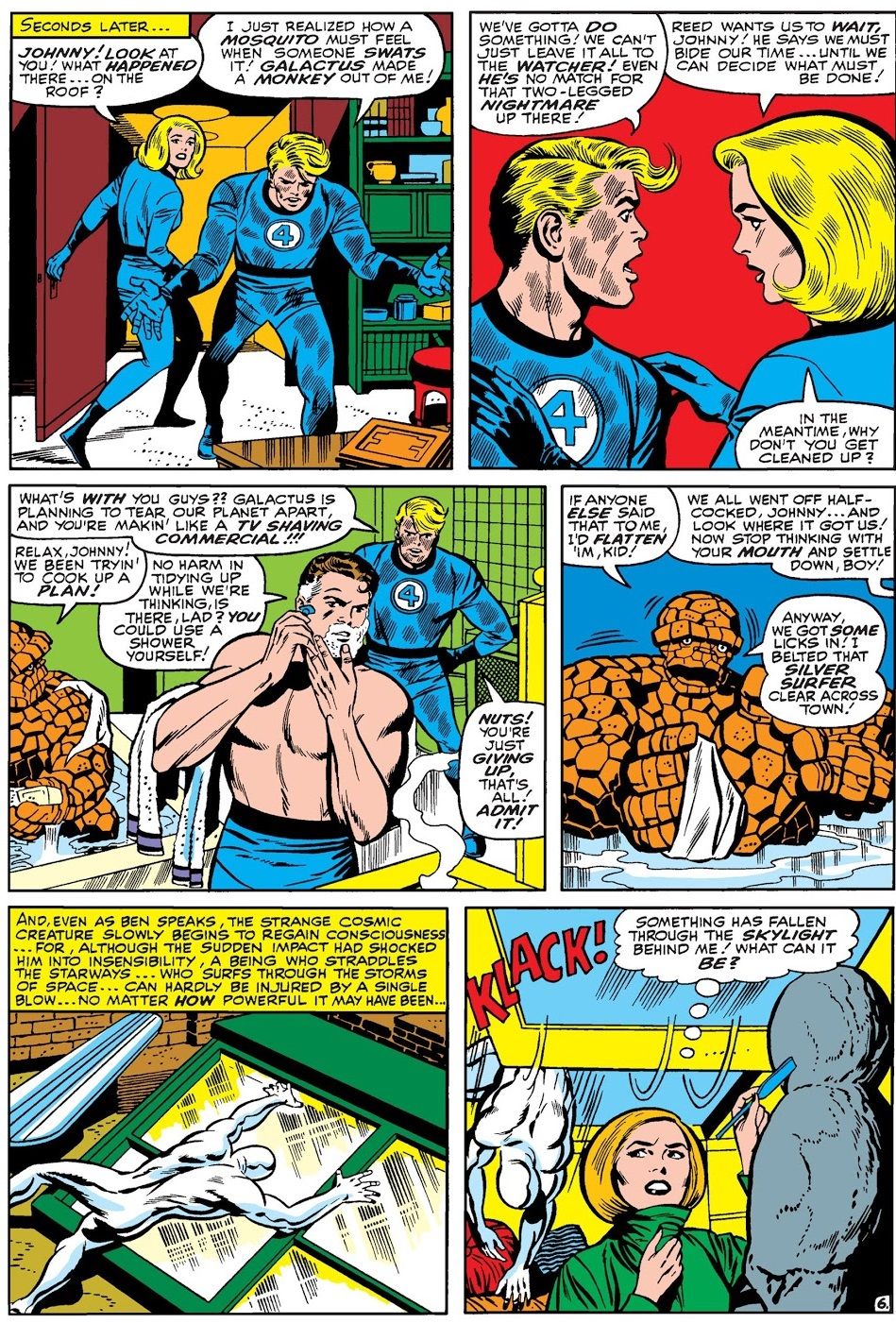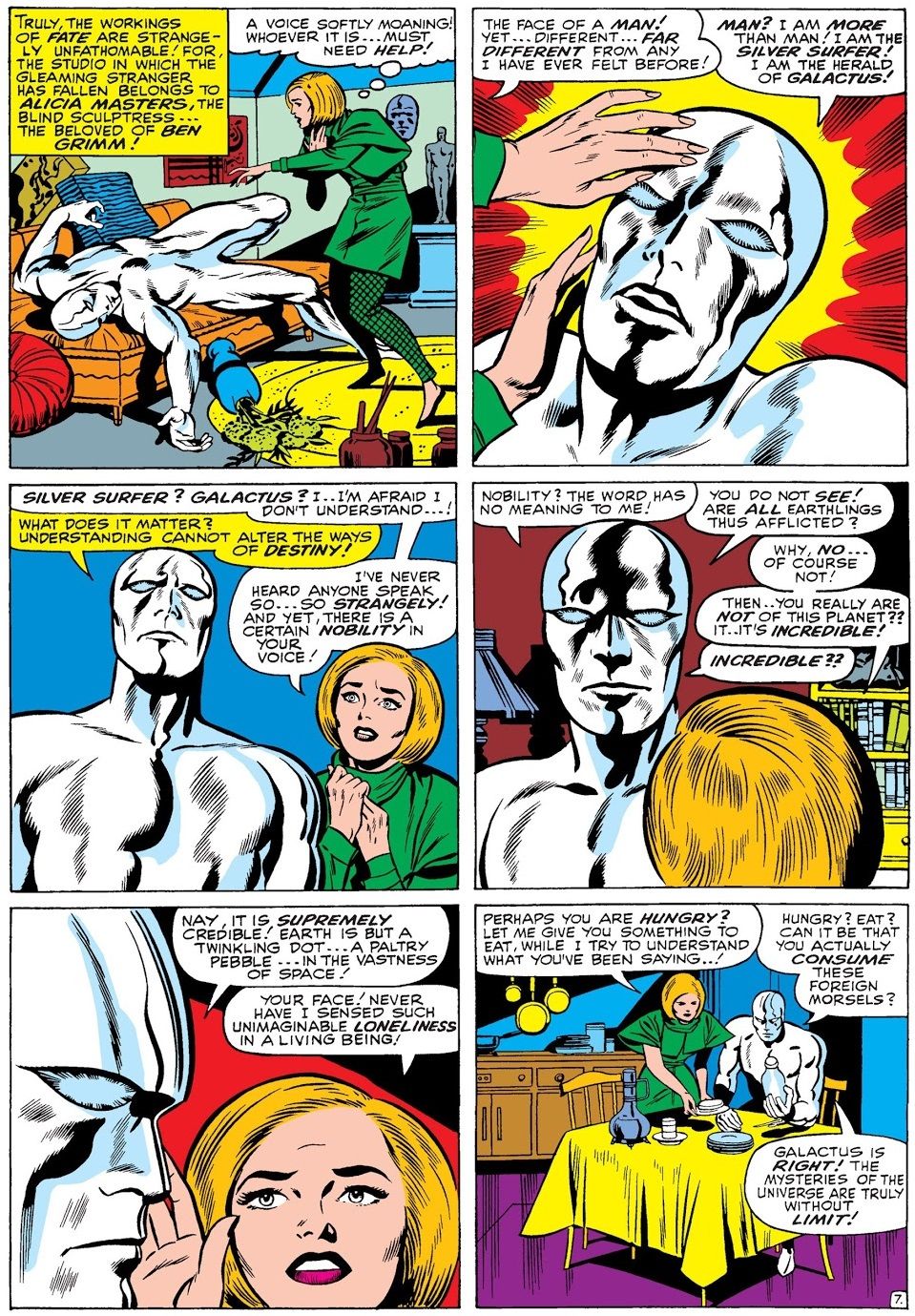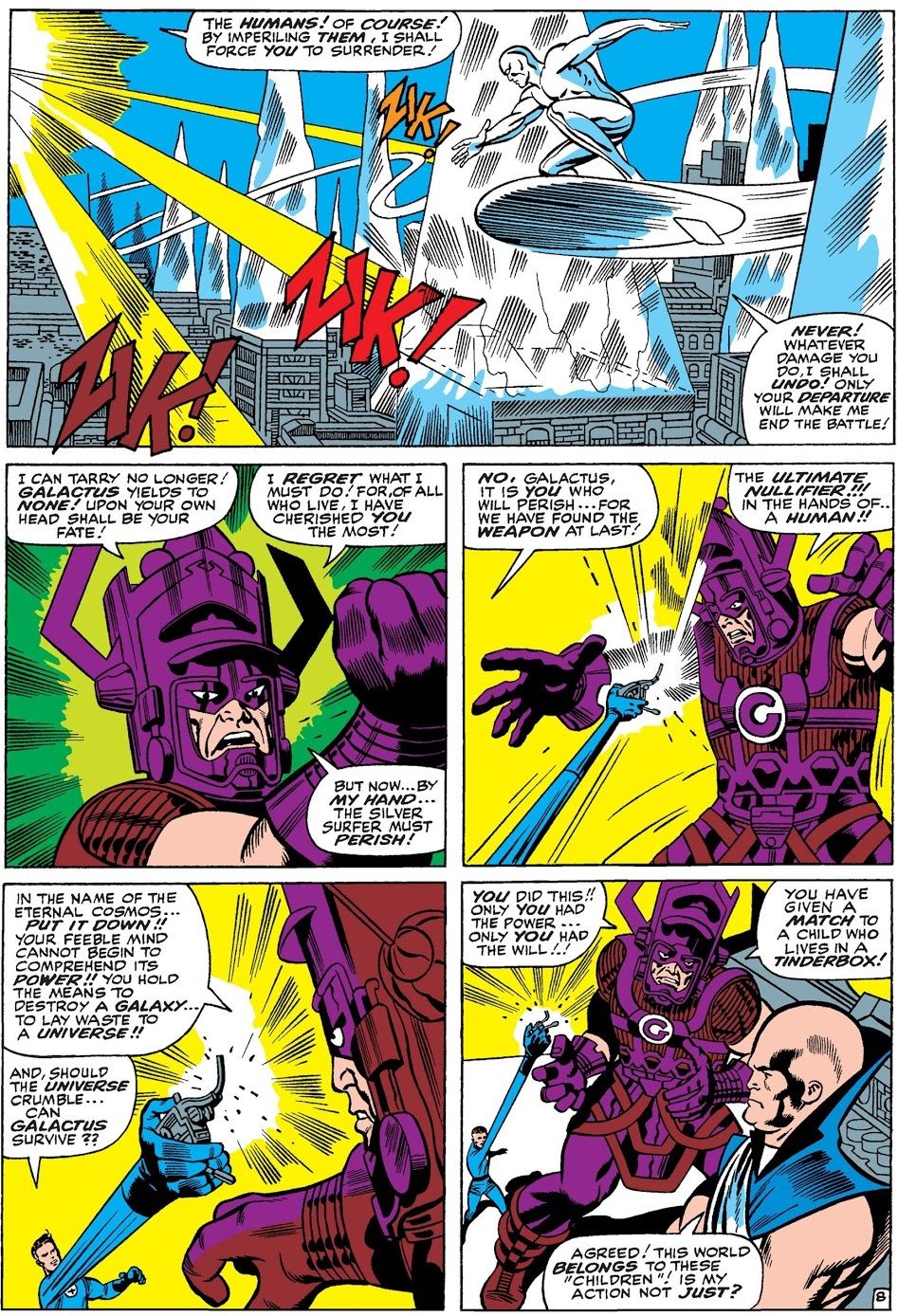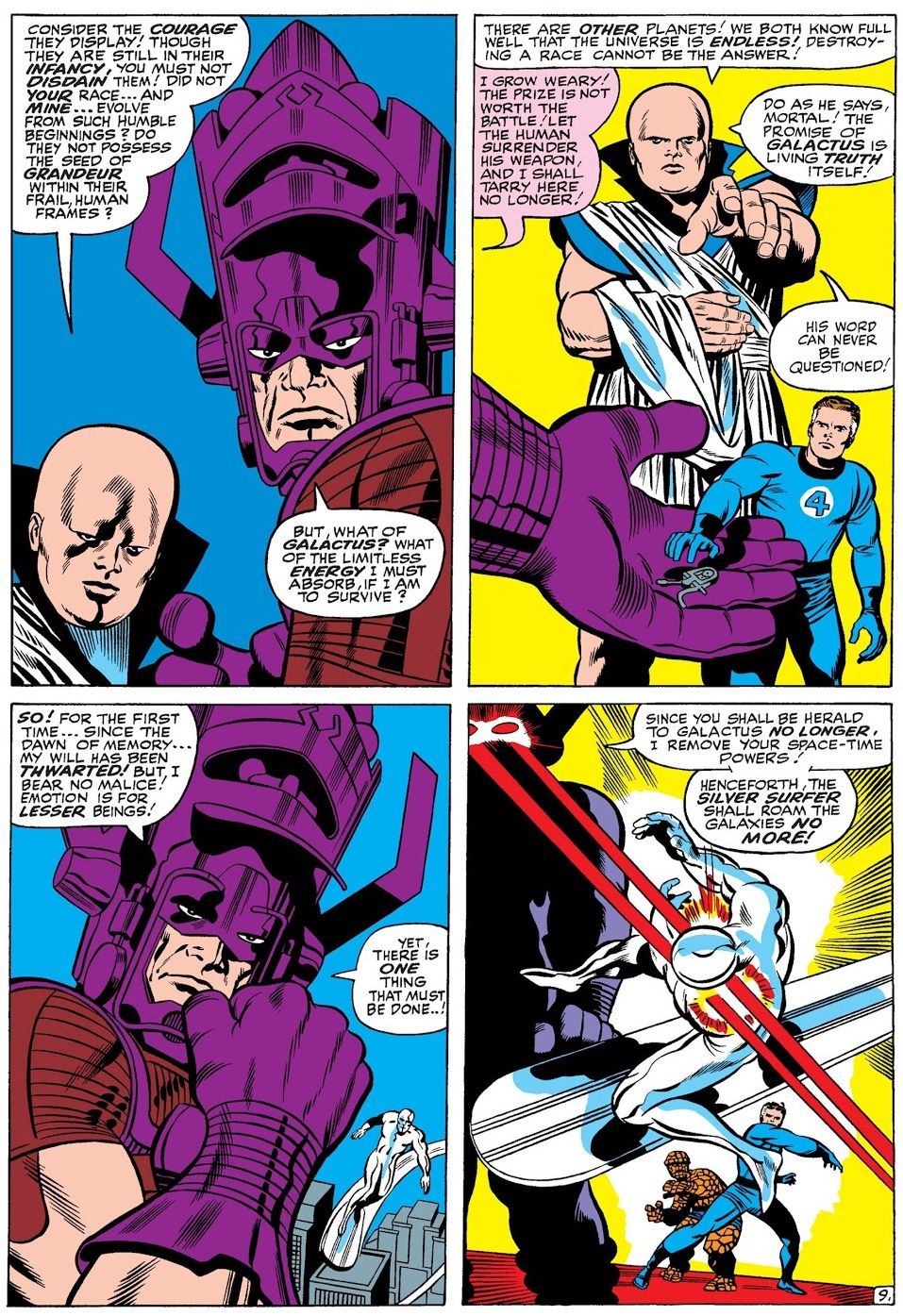Last month, Stan Lee passed away at the age of 95. Lee was likely the most famous comic book creator in the history of the medium and he was the Editor-in-Chief for Marvel Comics for a remarkable three decades stint from the Golden Age through the launch of the Marvel Age of Comics. Working with iconic creators like Jack Kirby, Steve Ditko, John Romita, Joe Maneely, John Buscema, Don Heck, Wallace Wood, Dick Ayers, Gene Colan and many more, Lee either co-plotted and scripted or simply scripted some of the most famous stories in the history of comics. We asked you to vote for your picks for the top comic book stories that Lee either scripted or co-plotted and scripted. Here are the results!
3. "Spider-Man!" Amazing Fantasy #15 (1962)
What makes the origin story of Spider-Man so especially remarkable is that Stan Lee and Steve Ditko did the whole thing in the length of a typical story in one of Marvel's many horror and science fiction anthologies of the time. Lee had created Amazing Adult Fantasy as a spotlight for Ditko's particular brand of stories, the really clever stuff that did not rely as much on action. With the success of the Fantastic Four, however, Lee was slowly transforming those anthologies into superhero titles and this time it was Amazing Adult Fantasy's time, as it dropped the "adult" part to introduce a new hero who was, in a rarity for the time, a teenager.
In just a few short pages, young Peter Parker has been bitten by a spider and is already developing webspinners and a costume...
In another novel idea at the time, Spider-Man is a bit of a JERK for much of the story. He lets a crook get away because, well, why should Spider-Man care?
Then he learns that his beloved uncle has been murdered...
He uses his powers to bring the killer to justice and, of course, it is the same guy that he let go free earlier. How awesome of a twist is that? That then set up the foundation for one of the greatest superheroes of all-time...
It is still remarkable how much Ditko and Lee packed into that short story.
Page 2: [valnet-url-page page=2 paginated=0 text='See the top choice!']
2. "If This Be My Destiny" Amazing Spider-Man #31-33 (1965)
This storyline is particularly interesting in the fact that, right smack in the midst of it all, Gwen Stacy and Harry Osborn are introduced!
The story is set as Peter Parker is just beginning college – he hopes to be able to concentrate on his studies, but he soon learns that his Aunt May is deathly ill, likely due to a blood transfusion Peter gave her a number of issues ago (his blood being radioactive and all).
So Peter finds out a way of curing her, but he needs a special serum. Well, the problem is that a criminal known as the Master Planner ALSO wants the serum.
After a tussle, Spider-Man succeeds in securing the serum, but not before being trapped under a pile of heavy machinery in the Master Planner’s underwater base – a base that has cracked, sending water from the river above ever so slowly into the room where Spider-Man is trapped. And if that weren’t enough, the Master Planner’s guards are outside the room should Spider-Man somehow escape!
How Spider-Man gets out of this mess is the thing of comic book legend, and that’s just who the creative team was – Steve Ditko delivers what was basically his swan song on the title (he stuck around for a few more months, but clearly, this was the high water mark of his run – everything else was downhill from here until he left at #39, likely because he knew he was on the way out), and he goes out in style, with some of the most brilliantly designed pages of the Silver Age.
Stan Lee delivers the pathos along with Ditko’s brilliant action sequences. What's sometimes lost about that sequence is that that was not the extent of what Spider-Man had to do to get to Aunt May. He still had a whole pile of armed guards to defeat, all while injured and having just lifted a whole ton of stuff off of him, so he was exhausted beyond belief, but he just essentially turned his mind off and just starting swinging until everyone was out cold. It was yet another stunning sequence by Ditko right after the previous (more famous) stunning sequence. Ditko was really riding on all cylinders at this point in time.
Peter’s sense of responsibility never had such tangible evidence as this storyline – what he will do to save his Aunt is amazing, or maybe even spectacular!
1. “The Coming of Galactus” Fantastic Four #48-50 (1966)
The top storyline works as the epitome of the epic cosmic adventures Stan Lee and Jack Kirby sent the Fantastic Four on often, with wild technology and astonishing stakes (the fate of the entire planet) but at the same time, real human elements, like Reed Richards’ reaction to having to try to save the Earth from doomsday (he doesn’t deal super well with the enormous pressure, grows a beard and even snaps at Sue). However, the most "human" part of the story turned out to not involve a human at all, as the alien being known as the Silver Surfer, the being who was the herald and literally drew the world-eating Galactus to Earth, ended up falling to Earth and learning a valuable lesson in humanity from a familiar face...
And one of the most interesting aspects (and also part of what made the Kirby/Lee FF so great, with Joe Sinnott inking Kirby on this storyline) of the story is how #48 contains the ending of the previous arc and #50 has a story AFTER the Galactus story wraps up (and sets up a story for #51!). At the time, Kirby and Lee were coming up with so many ideas that something as cool as the Galactus trilogy, where basically “God” showed up to destroy the Earth, was not even the SOLE story for the three parts of the trilogy!!!
The 50th issue has some stretches of the imagination, but it also has two extremely iconic moments – Reed Richards threatening Galactus with the Ultimate Nullifier…
and Galactus stripping his former herald, the Silver Surfer, of his abilities to roam the galaxy, as punishment for helping to fight for the people of Earth…
And note that these moments were handled as just one of many panels!!
You could argue that this comic had it all – great story, great art, cosmic problems, earthly problems, action – it was the complete package, and it still stands out today, fifty-plus years later!

